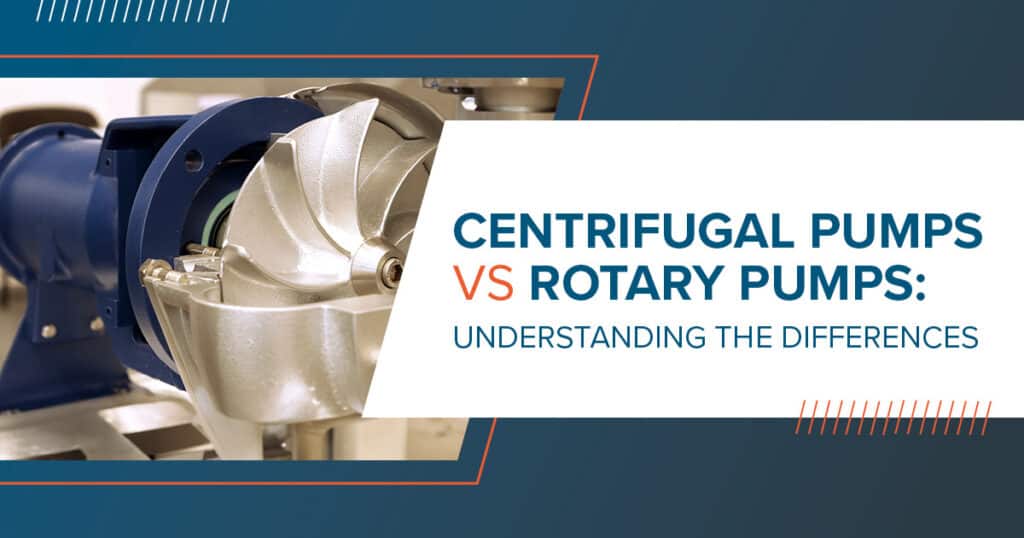With so many disparate types of pumps to consider, selecting the best one for your particular processing application can be challenging. It’s important to do your research before buying. This will ensure you procure the best pump for the job. Investing the time and money to make the right choice now can save you significant trouble down the road.
Today we want to examine the key differences between two pump types: centrifugal pumps and rotary pumps. What engineering principles make them unique? What are their strengths and weaknesses? Which applications do each pump type handle best?
Centrifugal Pumps
Centrifugal pumps are the most commonly used pump type. There are some subcategories of centrifugal pumps, but we’ll focus on the standard designs we see clients use most at DXP Pacific. Centrifugal pumps are rotodynamic pumps. They feature a radial flow pattern, using kinetic energy created with a rotating impeller inside the pump housing. As the impeller rotates, the kinetic energy is converted into potential energy. This generates pressure in the discharge collector as process fluid exits the impeller. It is an efficient, effective, powerful design, which explains why it is the basis for so many pumps you see in service for industrial, municipal, and agricultural applications.
Rotary Pumps
Rotary pumps are a subset of positive displacement (PD) pumps. This means they utilize a method of liquid displacement to push material through the pump. Rather than an impeller design, rotary pumps use different internal mechanisms to create constant pressure and flow. Examples include meshing screws, gears, sliding vanes, and lobes. This provides a consistent flow rate regardless of any changes in pressure. The main factor affecting output flow is the operating speed. The flow rate of a rotary pump changes in a linear relation to changes in speed. Rotary pumps offer self-priming and dry-run capabilities. They also provide consistent flows, which is important for certain process fluids and applications.
Comparing the Disadvantages
While both centrifugal pumps and rotary pumps offer many benefits, some downsides are worth noting. Centrifugal pumps have limited suction lift capabilities and limited pressure capabilities. You may want to avoid a centrifugal pump if you have a high-pressure or high-lift application.
Rotary pumps, on the other hand, generally don’t offer the same operating efficiency as centrifugal pumps. However, the advantages and disadvantages may vary by rotary pump type. It is critical to understand the key discrepancies between a sliding vane pump and a gear or screw pump.
Rotary or Centrifugal Pump?
In short, centrifugal pumps are versatile. This is why they are more commonly used. Rotary pumps are often used for more specialized applications. Take the time to understand your application and your process fluid or materials. This may help determine which pump type is best.
For all your pump selection and custom system configuration needs to meet your specific pumping requirements, contact the team at DXP Pacific today. Let our engineers guide you for the best long-term results.

